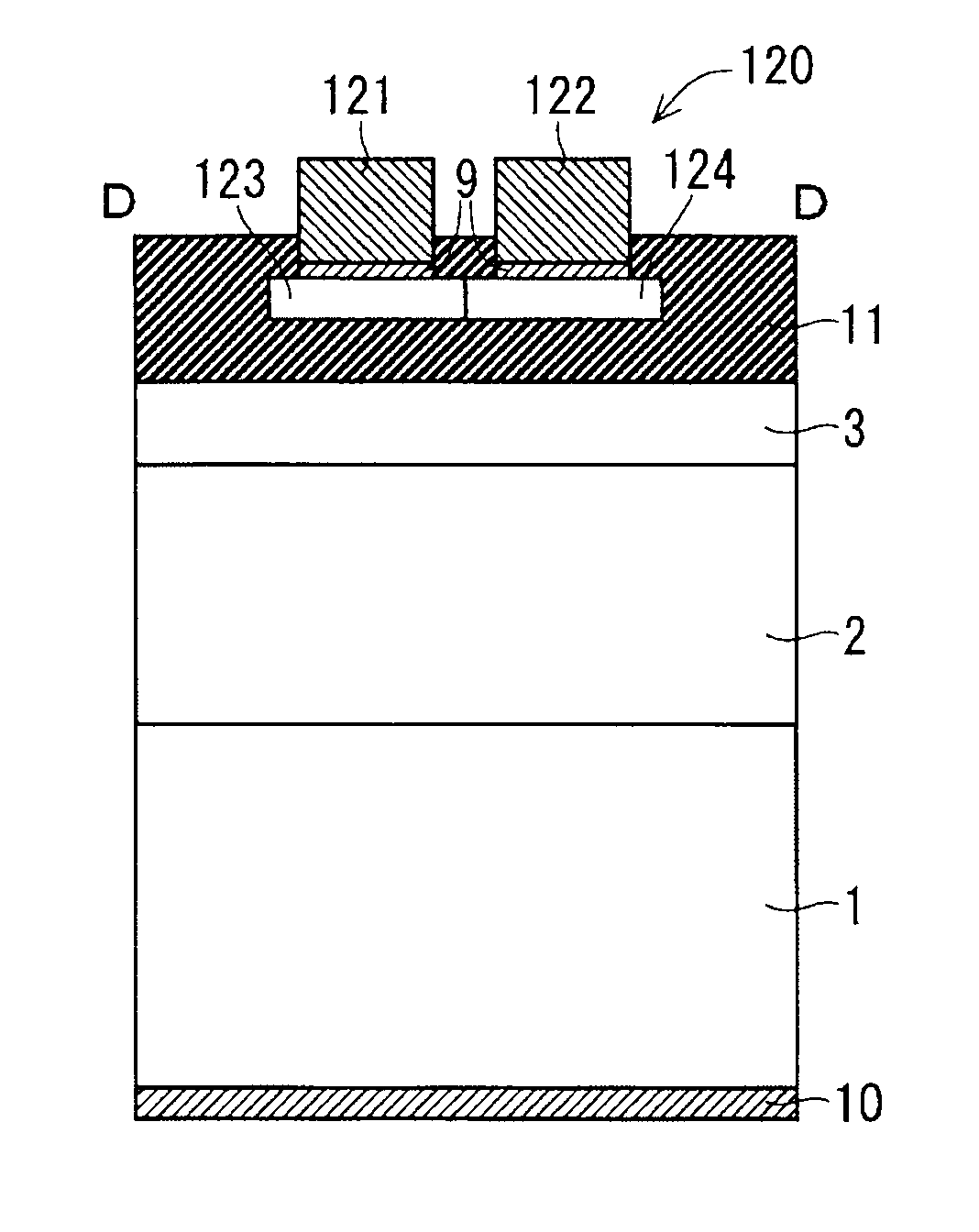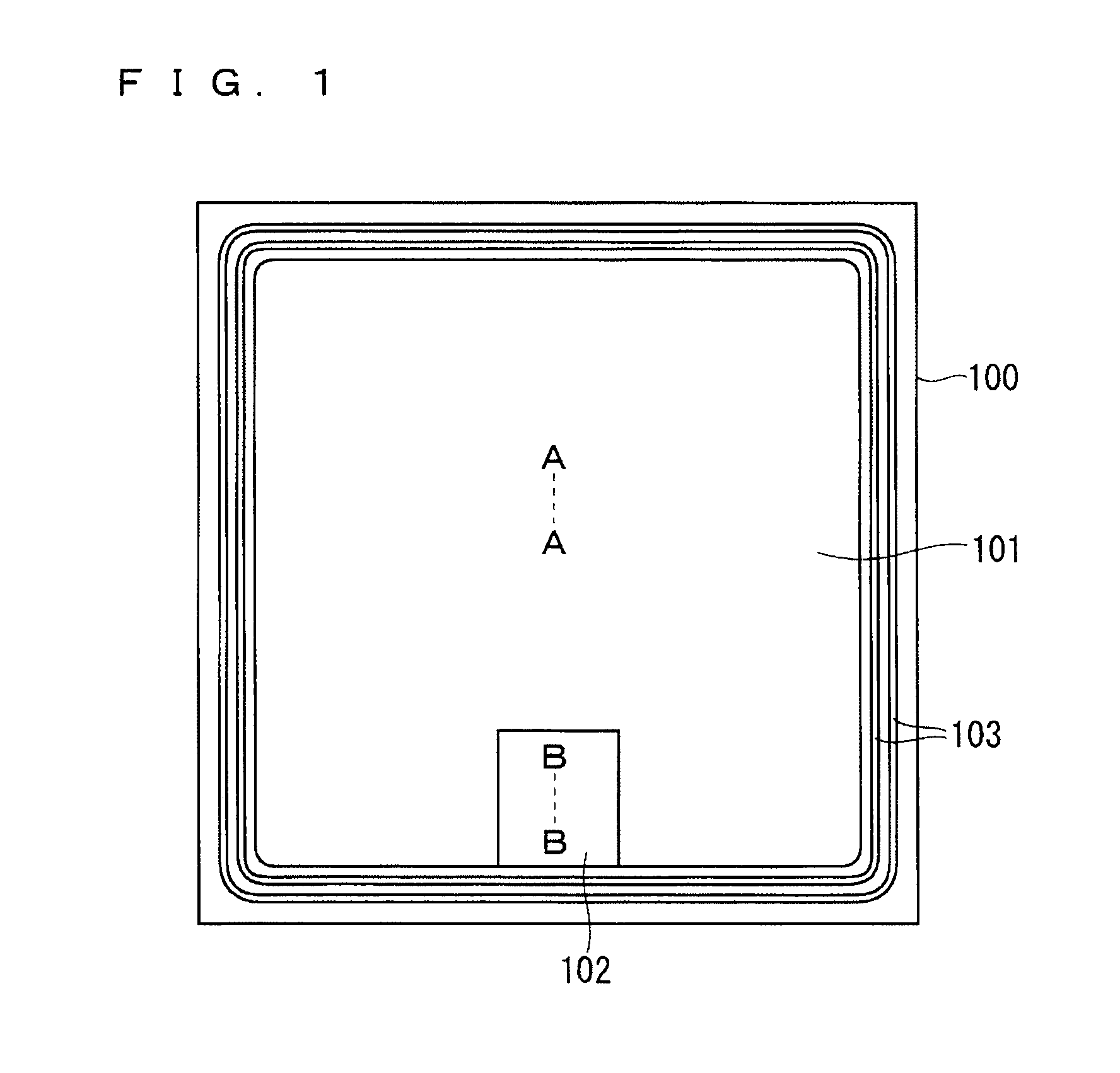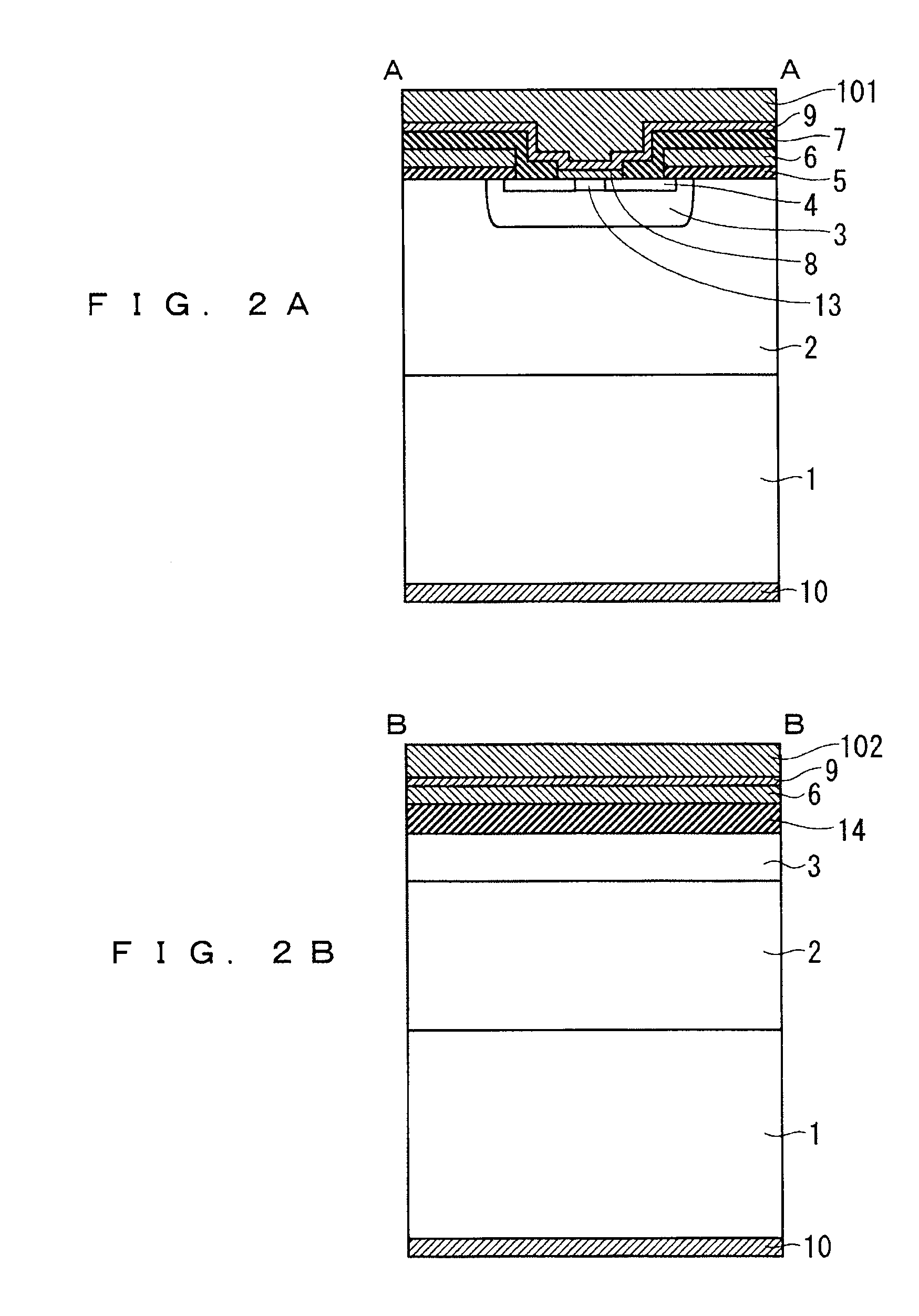Semiconductor device
a technology of semiconductor chips and semiconductors, applied in semiconductor devices, diodes, electrical equipment, etc., can solve the problems of mosfet breakage, high risk of short circuit generation, and fear of semiconductor chip breakage, so as to prevent short circuit generation, prevent corrosion of insulating films, and suppress threshold voltage reduction with time
- Summary
- Abstract
- Description
- Claims
- Application Information
AI Technical Summary
Benefits of technology
Problems solved by technology
Method used
Image
Examples
first preferred embodiment
[0028]FIG. 1 is a top view of a semiconductor chip with a semiconductor device of a first preferred embodiment of the present invention. An SiC-MOSFET is shown as an example of the semiconductor device. A source electrode 101 and a gate pad 102 connected to a gate electrode are formed on the upper surface of a MOSFET chip 100 to hold the MOSFET. A field limiting ring 103 is provided as a termination structure on the outer circumference of the MOSFET chip 100.
[0029]FIGS. 2A and 2B are sectional views of the MOSFET chip 100. FIG. 2A is a sectional view of a MOSFET cell portion (cross section taken along a line A-A of FIG. 1). FIG. 2B is a sectional view of a gate pad portion (cross section taken along a line B-B of FIG. 1). The MOSFET chip 100 includes parallel connection of a plurality of cells of the structure shown in FIG. 2A, and the gate electrode of each of the cells is connected to the gate pad 102.
[0030]The MOSFET includes an SiC substrate to become an n+-buffer layer 1, and a...
second preferred embodiment
[0040]Some MOSFETs include a current sensing cell that detects current flowing in the MOSFETs. An exemplary object of the current sensing cell is to detect overcurrent so that the MOSFETs can be protected from breakage due to overcurrent. The current sensing cell generally shares a gate and a drain with a MOSFET cell normally used (main MOSFET cell). The current sensing cell diverts part of main current flowing in a MOSFET to obtain minute current that is in proportion to the main current.
[0041]FIG. 6 is a top view of a MOSFET chip 100 of a second preferred embodiment. Some of MOSFET cells of the MOSFET chip 100 is used as a current sensing cell 110. A source electrode (current sensing electrode) 111 of the current sensing cell 110 is separated from a source electrode 101 of a main MOSFET cell, whereas the gate electrode of the current sensing cell 110 is shared with the main MOSFET cell and is connected to a gate pad 102.
[0042]FIG. 7 is a sectional view of the current sensing cell ...
third preferred embodiment
[0046]It has been derived from the first preferred embodiment that the thickness of the barrier metal layer 9 of 60 nm or more can limit reduction of a threshold voltage to be about 0.2 V or less from the results (FIG. 4) of the HTGB test conducted in the cases where the barrier metal layer 9 had a thickness of 30 nm and 75 nm.
[0047]However, the inventors have conducted further experiments and found that the effect of suppressing reduction of a threshold voltage has already become saturated in the state in which the thickness of the Ti barrier metal layer 9 is smaller than 75 nm and reduction of a threshold voltage can be suppressed sufficiently even in a case where the thickness of the barrier metal layer 9 is smaller than 60 nm. The experimental results thereof are described below.
[0048]FIG. 8 shows a relationship between the thickness of the Ti barrier metal layer 9 and the change of the threshold voltage (VGSth) of the MOSFET. Here, the HTGB test similar to that of FIG. 3 was co...
PUM
 Login to View More
Login to View More Abstract
Description
Claims
Application Information
 Login to View More
Login to View More - R&D
- Intellectual Property
- Life Sciences
- Materials
- Tech Scout
- Unparalleled Data Quality
- Higher Quality Content
- 60% Fewer Hallucinations
Browse by: Latest US Patents, China's latest patents, Technical Efficacy Thesaurus, Application Domain, Technology Topic, Popular Technical Reports.
© 2025 PatSnap. All rights reserved.Legal|Privacy policy|Modern Slavery Act Transparency Statement|Sitemap|About US| Contact US: help@patsnap.com



